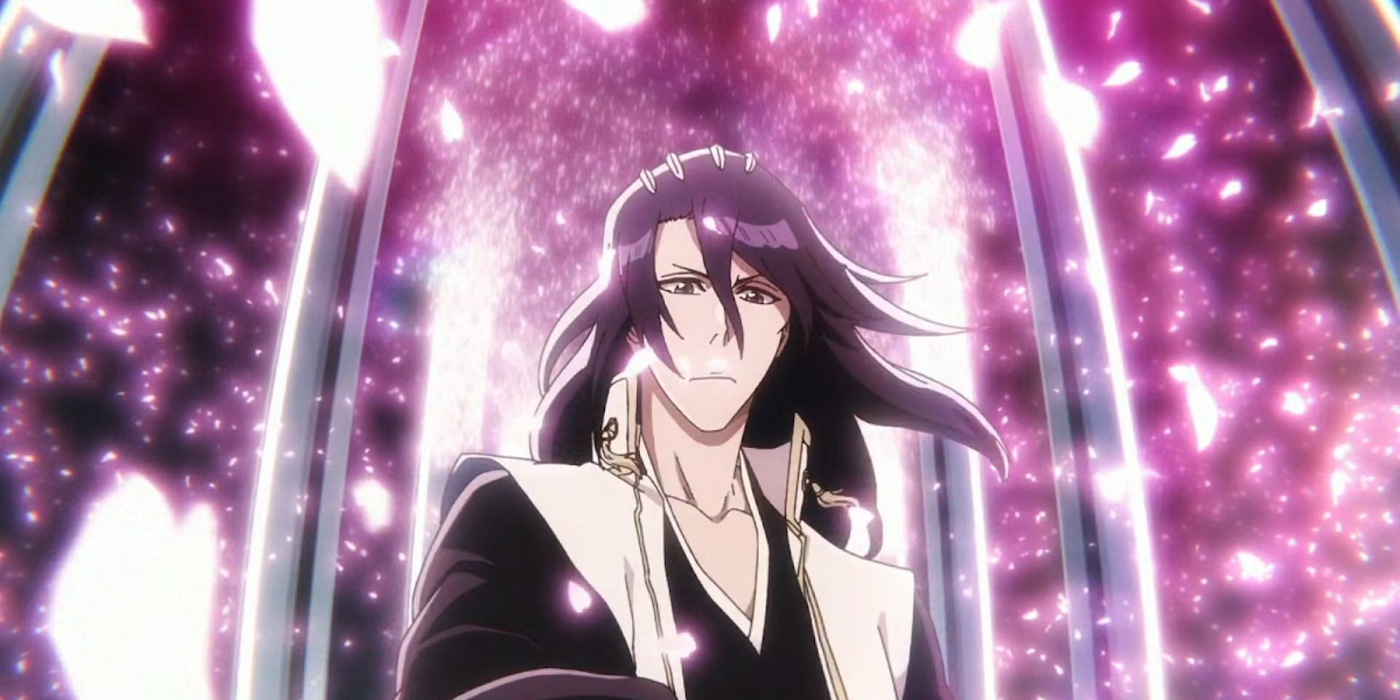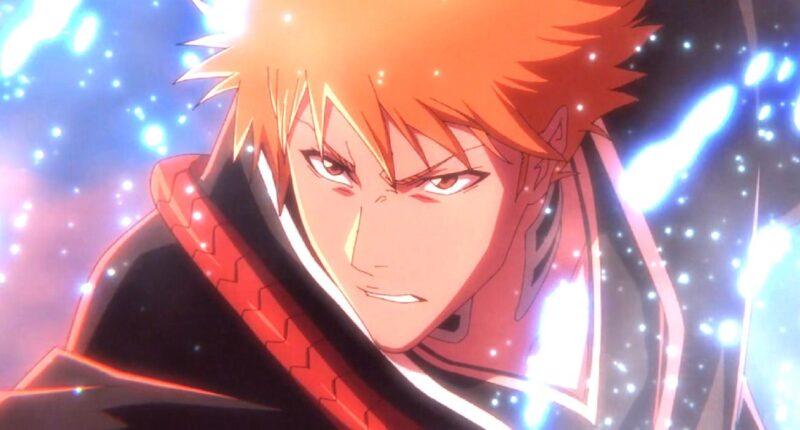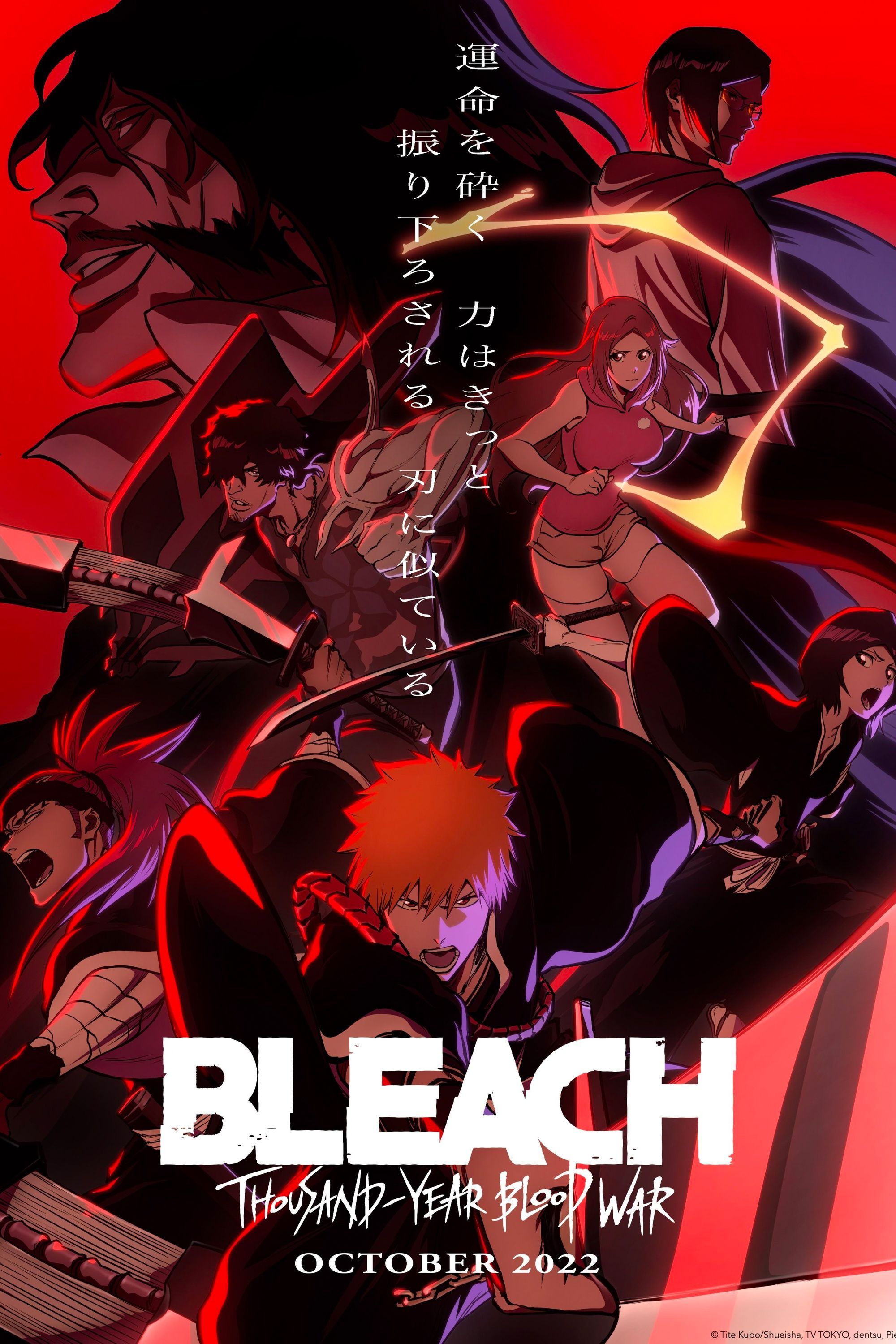Bleach: Thousand-Year Blood War delivers a compelling anime storyline largely thanks to its poignant and exciting character development. Mangaka Tite Kubo has once again proven why he is a master of writing manga with this action-packed sequel that picks right off where 2004’s Bleach anime ended. The popular anime follows a high school student with supernatural powers maintaining a balance between the world of the dead and the living. Fans were dismayed upon finding out that Kubo’s manga would no longer be adapted into animation after 2012. Thankfully, with the release of Thousand-Year Blood War, audiences can now see why Kubo’s manga has the best-written characters among competitors in the genre. As Season 3 of the series continues to play out, we can better understand how Kubo initially achieved this.
It is how we watch characters such as Ichigo Kurosaki, Sosuke Aizen, and Yhwach evolve that rings that statement as true. First and foremost, it is very rare to see a series that intentionally displays the viewpoint of a myriad of characters. When you’re able to see the motivating factors behind each individual and how this impacts the overall world around them, that’s when you know that you’re being treated to a well-written show. At times, anime competitors such as Naruto and Dragon Ball Z have difficulty effectively implementing this strategy. An excellent example of this is when we discover what caused the death of Ichigo’s mother and how this affects the man he would become.
Why Is Ichigo Kurosaki One of Anime’s Best Protagonists?
During Season 1 of Bleach: Thousand-Year Blood War, we quickly learn just how complex Ichigo Kurosaki’s origins truly are. At this point in the timeline, an all-out war between the Soul Reapers and their rival Quincies has taken a turn for the worst. The Seireitei, a space that acts as a home for the Soul Reapers within the Soul Society, is on the verge of complete destruction. The leader of the Quincies, Yhwach, has successfully pulled off a sneak attack, leaving the Soul Reaper’s 13 Court Guard Squad Captains desperate for assistance. As a valuable asset, Ichigo is asked to support the counter-offense against the Quincy army. But before Ichigo can leave, his father finally drops a bombshell on him that has been hinted at for years in the series — his mother, Masaki Kurosaki, was a Quincy.
Now, where have you seen a plot twist as wicked as this in an anime before? Ichigo is unwillingly forced to battle members of his own bloodline to the death for the sake of Soul Society. The subtle build-up from Kubo purposely kept details about Masaki hidden during Bleach, and now we’re seeing the payoff in Thousand-Year Blood War. Throughout the vast majority of the series’ opening seasons, we knew little to nothing about Ichigo outside the fact that he was struggling to raise his two younger sisters with his often absent father, Isshin Kurosaki. Eventually, audiences learned the reason for his father’s absence was partly due to his former life as a Soul Reaper. This was a ground-shattering development because his parents were essentially mortal enemies who had found a way to cultivate love. Other shōnen anime simply don’t delve this deep into family relationships! Everything comes full circle when Ichigo learns that series antagonist Sosuke Aizen created the hollow that infected his mother. Moments like these demonstrate the depth of the character connections in Bleach: Thousand-Year Blood War.

Related
Unleash Your Bankai With New ‘Bleach’ Funko Pop Figures
The new figures are available for preorder.
‘Bleach: Thousand-Year Blood War’ Makes Sosuke Aizen a Great Antagonist
Sosuke Aizen, once a trusted captain of the 13 Court Guard Squads, defected in search of power that could challenge that of the Soul King. In Episode 3 of Bleach: Thousand-Year Blood War’s current season, fans finally get to see the Soul King, who is revered as the omnipotent deity ruling over the Soul Society. Aizen is a cold-hearted antagonist who essentially desires to become a god. Tite Kubo weaves a memorable arc throughout Bleach, where Aizen quietly builds a team of defectors aligned with his nefarious vision. These defectors would invade the Hollow’s world of Hueco Mundo in an effort to use their corrupted souls as weapons to exterminate the Soul Reapers. Aizen’s experiments with Hollows and his betrayal of the Soul Reapers would go on to trigger the domino effect that leads to Masaki Kurosaki’s death. Throughout this chapter, we realize that characters in the world of Bleach are not always what they appear to be. Aizen acted as a wolf in sheep’s clothing, inevitably causing the death of several of the series’ main and supporting characters. Tite Kubo ensures that his characters are given the ability to go through personal changes while still expanding the overall plot of the manga, and the anime reflects that beautifully.
When the home of the Soul Reapers falls under occupation during Bleach: Thousand-Year Blood War, the Quincy immediately try to win the favor of Aizen to bolster their cause. This is, again, a wonderful moment where Tite Kubo plays on character development, as leaders on both sides of opposing factions must come together to fight one common adversary. Aizen and Yhwach have committed violent atrocities in the name of their ideals in rather juxtaposed ways. Yet despite these individuals taking different approaches throughout the series timeline, they still end up joining forces and becoming an even more significant threat. Here, we see Tite Kubo using his ability to sculpt intricate character pathways as a means to differentiate antagonists in Bleach: Thousand-Year Blood War from other anime in the genre.
The Ruthless and Determined Quincy, Yhwach
In order to maintain this harmony, the Soul Reapers conducted a mass genocide against the spiritually gifted Quincy, two centuries prior to the start of Bleach. Tite Kubo uses this as the event that sparks the premise of Bleach: Thousand-Year Blood War and the motive behind Yhwach’s ambition. As the surviving progenitor of the Quincy, who are thought to be extinct, Yhwach sets out to punish the Soul King for not interfering with the merciless slaughter of his clan. With this character’s backstory, Kubo asks the audience to display empathy. Similar to protagonist Ichigo, we are shown the emotional toll that this war has had on Yhwach, with the expectation that we are to look at his actions in totality. Anime villains are rarely given the range to portray such distinction.
Unbeknownst to Ichigo, Yhwach is using him as a puppet in his plan. This is where Bleach: Thousand-Year Blood War unveils arguably one of the greatest character plot twists of all time. It is revealed that Ichigo’s long-time guide and companion, Zangetsu (Richard Epcar), is actually an entity reflecting Yhwach’s Quincy powers. Through this power, Yhwach has the ability to observe and manipulate Ichigo’s actions. Kubo hinted at this revelation several times throughout the course of Bleach, but hearing Zangetsu explain it to Ichigo is nonetheless a prolific moment. Again, we are given an example of how a character’s motives can have such a huge impact on the world around them and how this drives success for an anime series.
Bleach: Thousand-Year Blood War finally showcases why Tite Kubo has written the best characters of the big three. Since 2004, we have seen his characters traverse plots that were unexpected and refreshing to watch. Kubo continually shows that he is a mastermind when it comes to foreshadowing events and rolling out innovative plot twists. These consistent aspects of Kubo’s writing are what grant his franchise’s success. It’s time for fans of anime series to give Tite Kubo his flowers and recognize why Bleach: Thousand-Year Blood War deserves to be respected as the best in the genre.
Bleach: Thousand-Year Blood War is available to stream on Hulu in the U.S.
Watch on Hulu











